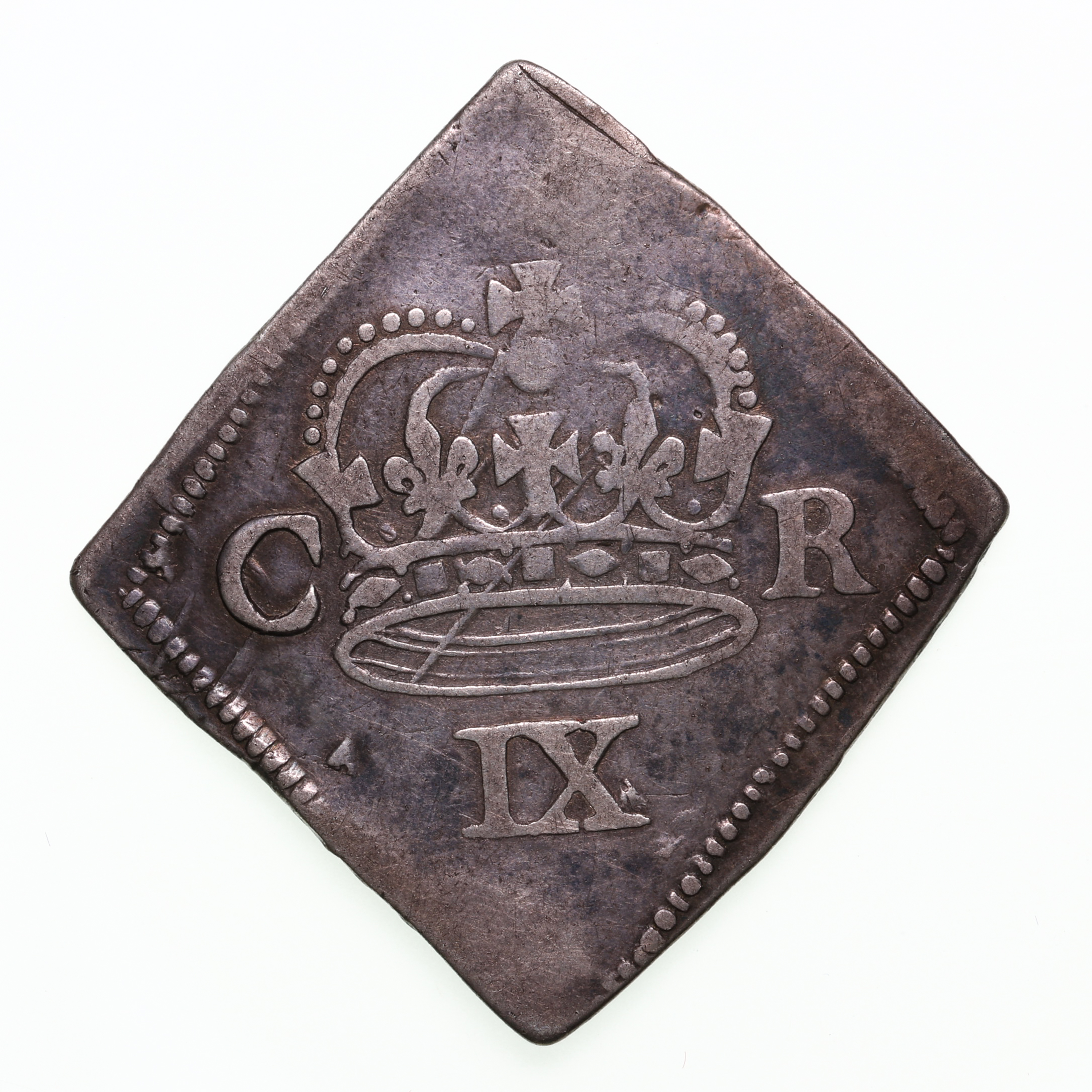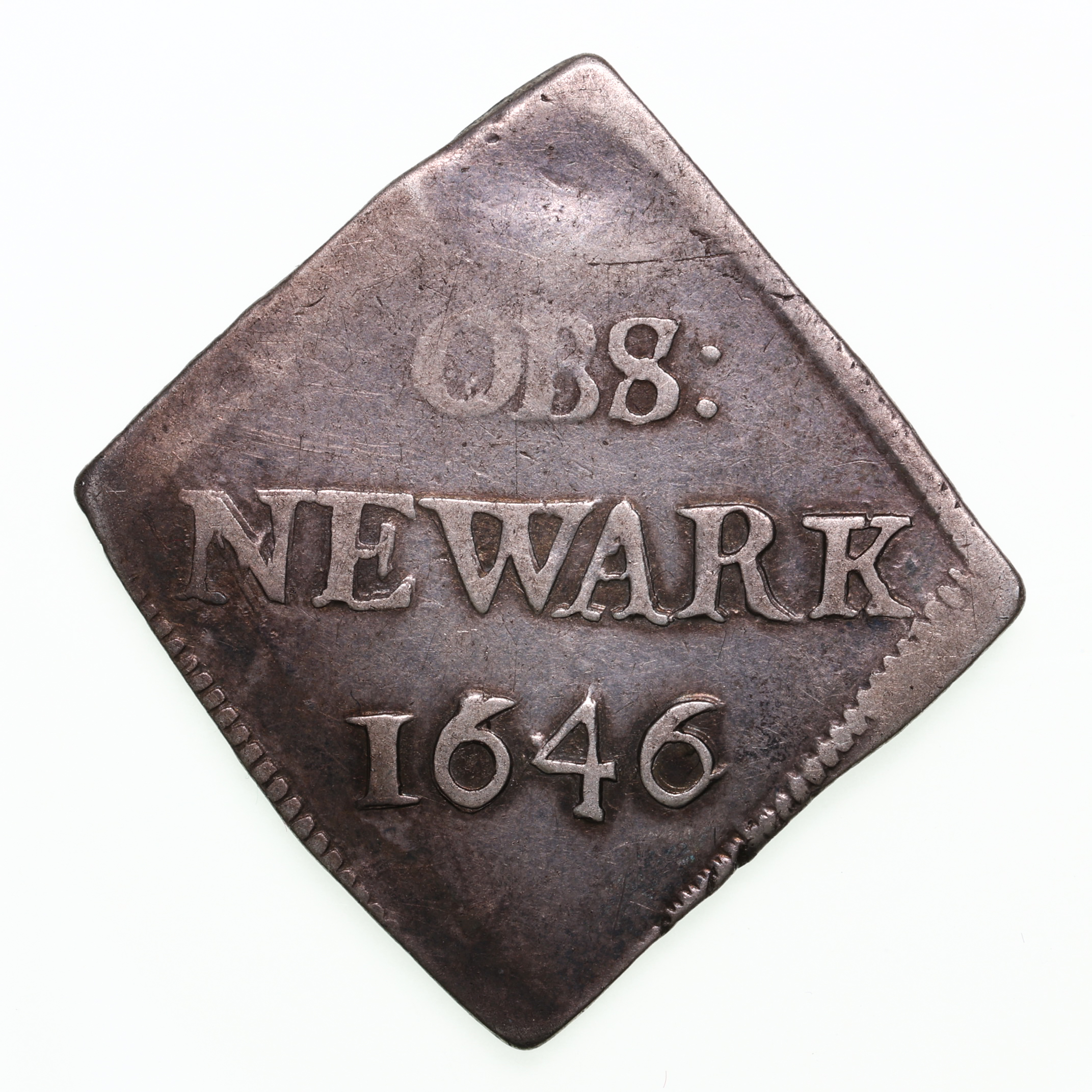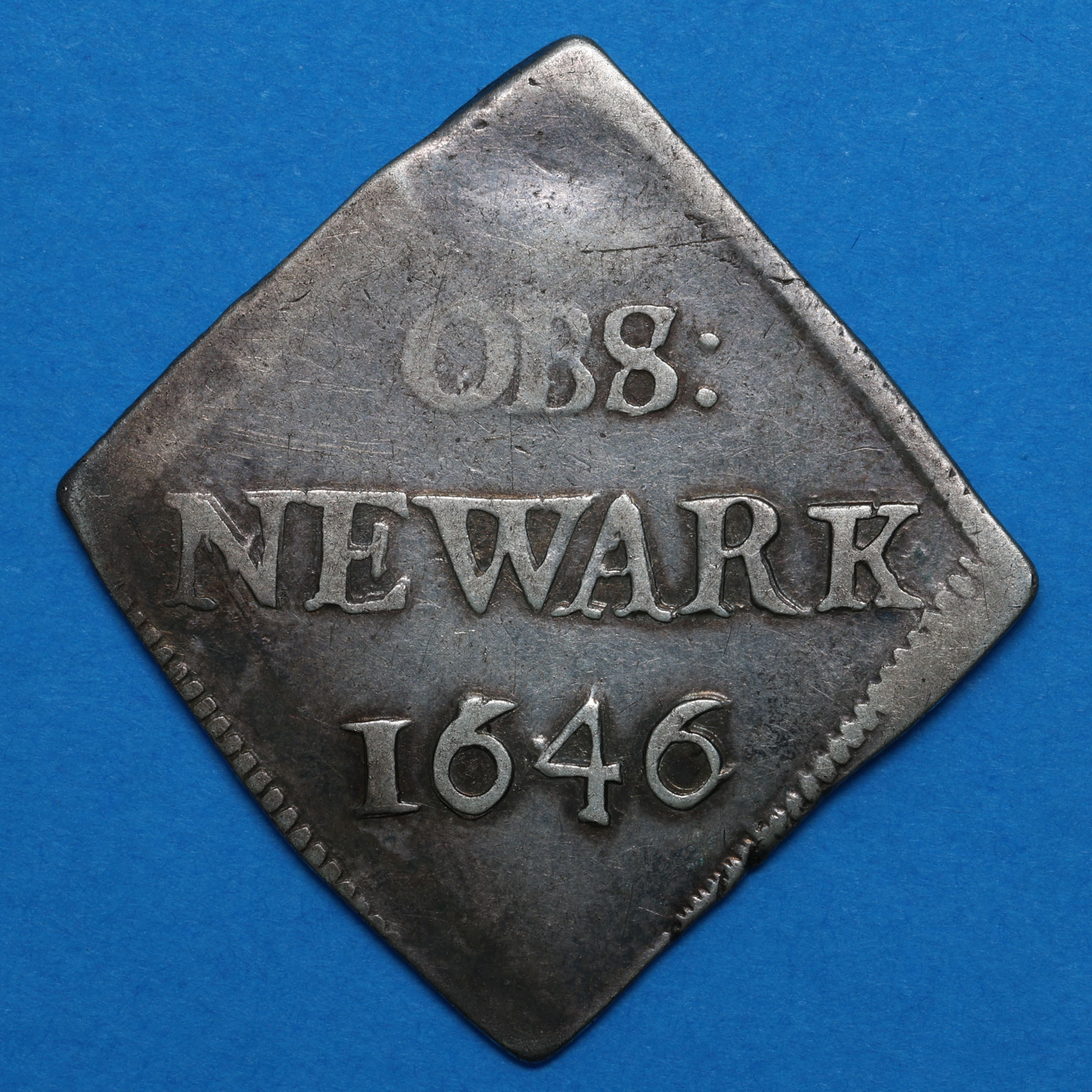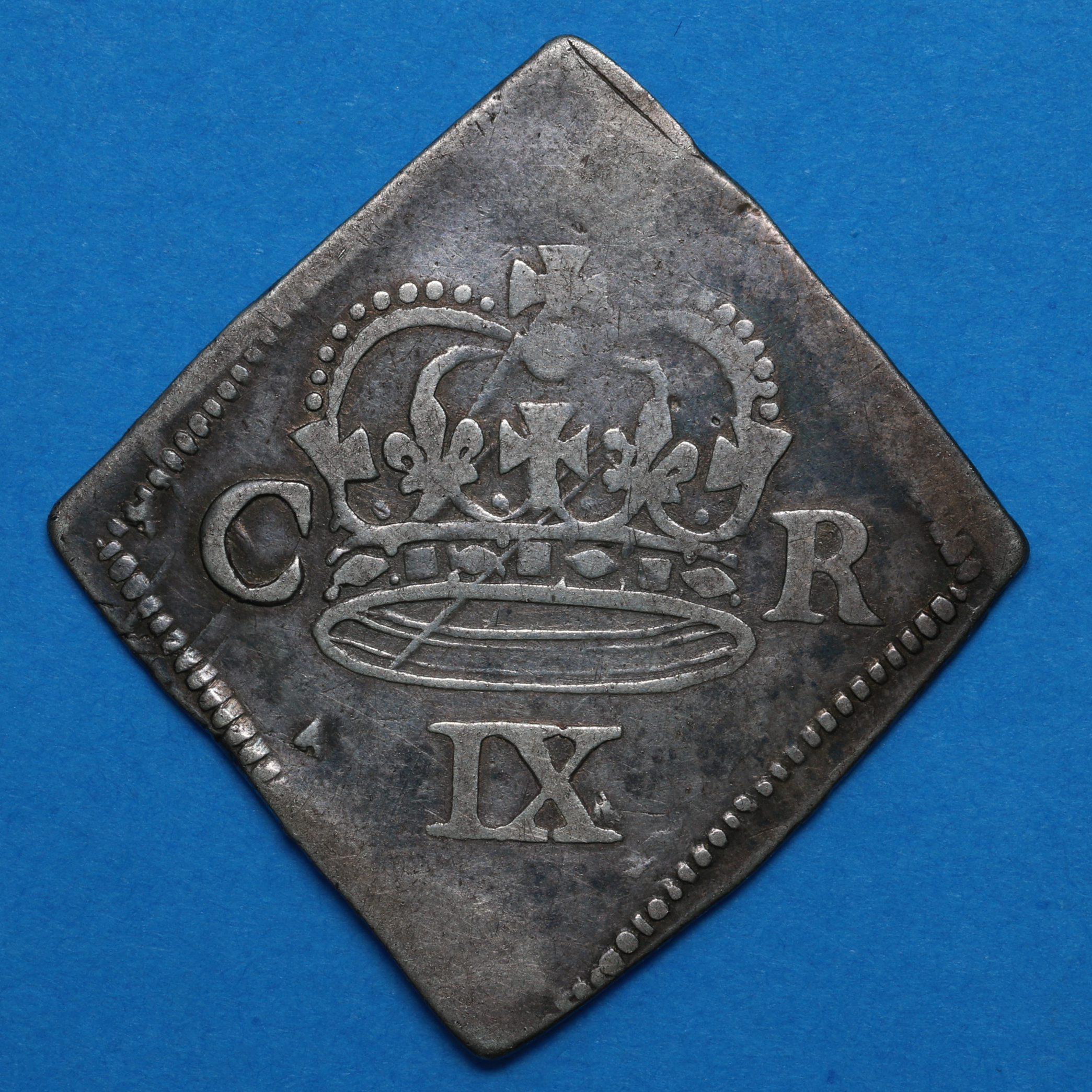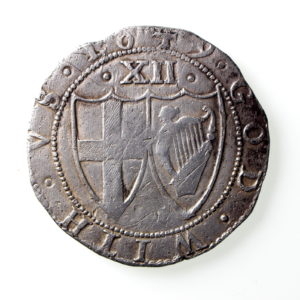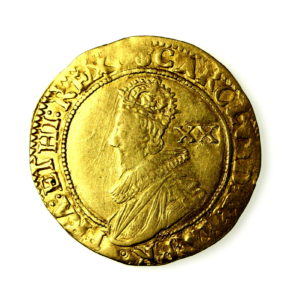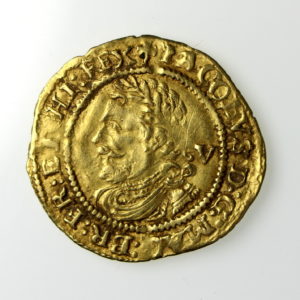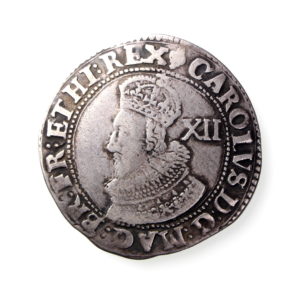Charles I AD 1625-1649 Silver Ninepence Newark Siege piece English Civil War AD 1646
£2,500.00
Charles I AD 1625-1649 Silver Ninepence Newark Siege piece, English Civil War, AD 1646
A most pleasing example in excellent condition. A little wear or softness to strike but all important detail clear.
S3144, 31x30mm, 4.38g
Siege money was struck in Newark during the siege in 1645/6, the last years of the English Civil War. The besieged Royalists set up a mint and used salvers, flagons, drinking cups, etc., fashioned into lozenge-shaped flans, striking half-crowns, shillings, ninepences, and sixpences in order to be able to continue paying the troops who were defending their king (payment required!).
Background Information on Siege Pieces of the English Civil War
During the Civil War the Parliamentarian forces retained control of London as well as the main sources of finance in the country. As a result the Royalists were starved of funds and as they were pushed back found it increasingly hard to finance their army. This became particularly acute in the towns which came under siege. To help fund their campaign any silver within these towns was melted down and recoined into what became known as siege pieces. These coins are mostly crudely struck.
Newark, which was put under siege three times during the Civil War, issued 4 denominations of siege piece. The most common are the halfcrown and shilling. Ninepence and sixpence pieces were also issued. All of these coins which are lozenge shaped and are of similar design. On the obverse a crown and cipher is depicted with the value stamped below. On the reverse the town and date are stamped.
Carlisle, which was besieged in AD 1644/5 multi sided three shilling and shilling pieces were issued. Again these depict a crown and cipher on the obverse with OB/CARL and the date, 1645 stamped on the rear.
Scarborough was besieged between July 1644 and July 1645 had the most comprehensive range of siege pieces issued. Most of these were particularly crudely made and range from a five shilling and eight pence piece down to a groat. Of various shapes and sizes these coins generally depict a castle sometimes with value stamped below. The reverse is generally plain.
Pontefract was besieged in the second Civil War between June 1648 and March 1649. Here lozenge shaped 2 shilling and shilling coins were issued prior to the execution of Charles I. After Charles was executed octagonal shaped shillings were issued which were in the name of Charles II. On the obverse all these coins depict a crown and cipher with DVM: SPIRO: SPERO around. On the reverse is a gateway with inscription around.
Out of stock

